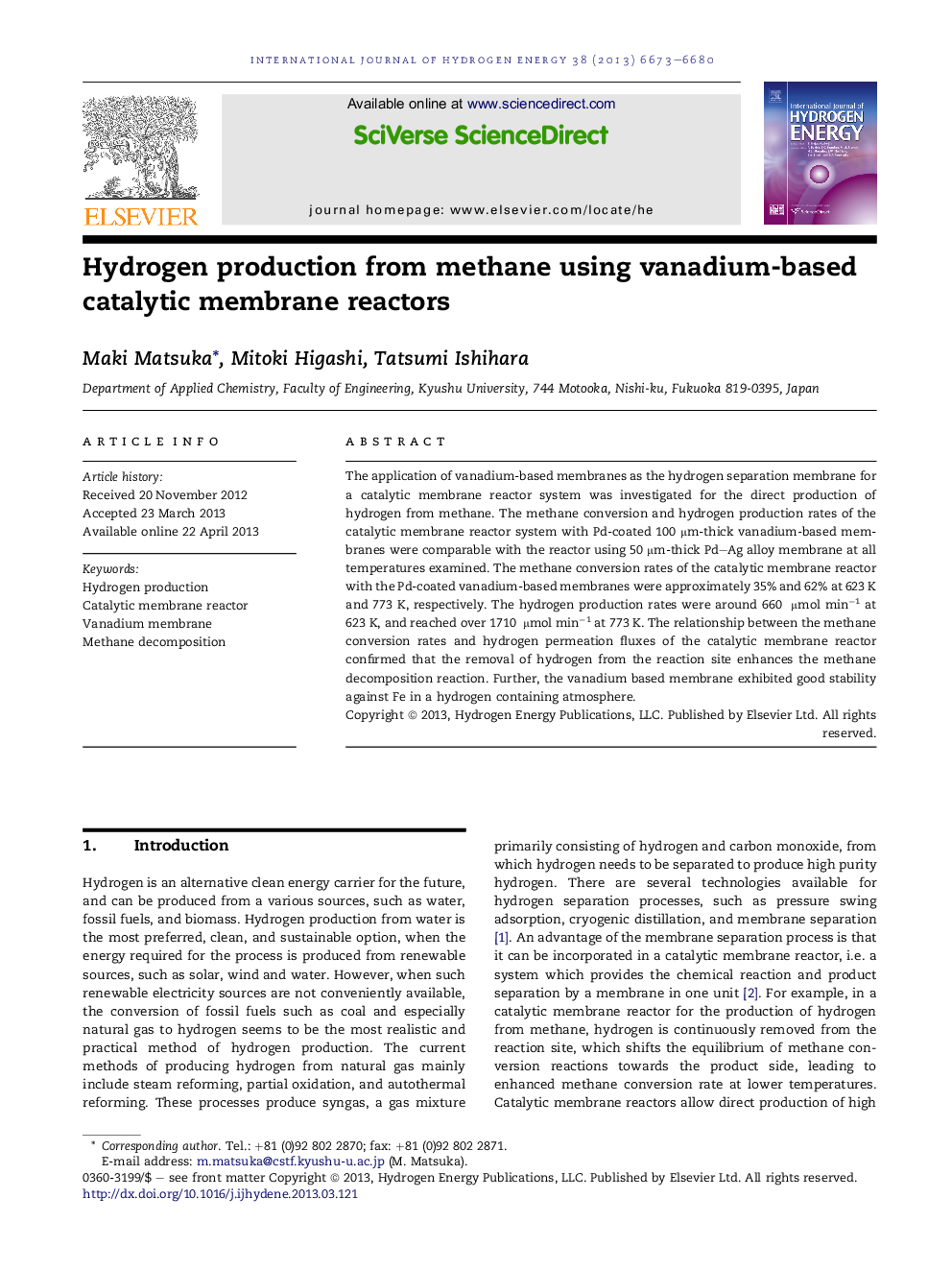| Article ID | Journal | Published Year | Pages | File Type |
|---|---|---|---|---|
| 1281587 | International Journal of Hydrogen Energy | 2013 | 8 Pages |
•V-based membranes were used as H2 separation membranes in a catalytic reactor.•The performance of V-based alloy membranes was comparable to Pd–Ag alloy membranes.•The V-based alloy membranes exhibited good stability against Fe in H2.•The removal of H2 using V-based membranes improved overall CH4 conversion process.
The application of vanadium-based membranes as the hydrogen separation membrane for a catalytic membrane reactor system was investigated for the direct production of hydrogen from methane. The methane conversion and hydrogen production rates of the catalytic membrane reactor system with Pd-coated 100 μm-thick vanadium-based membranes were comparable with the reactor using 50 μm-thick Pd–Ag alloy membrane at all temperatures examined. The methane conversion rates of the catalytic membrane reactor with the Pd-coated vanadium-based membranes were approximately 35% and 62% at 623 K and 773 K, respectively. The hydrogen production rates were around 660 μmol min−1 at 623 K, and reached over 1710 μmol min−1 at 773 K. The relationship between the methane conversion rates and hydrogen permeation fluxes of the catalytic membrane reactor confirmed that the removal of hydrogen from the reaction site enhances the methane decomposition reaction. Further, the vanadium based membrane exhibited good stability against Fe in a hydrogen containing atmosphere.
